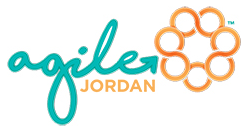
The scrum guides continues to change and improve. I loved the definitions that were added to the artifacts. However, I still see many Agile teams struggling with grasping the concept theoretically, so practical implementation becomes even more difficult.
Each of those definitions is connected to an artifice and I will get into each one.
What is most important is that these definitions require practice and cannot be perfected from the first attempt. Allow them to grow organically and continuously get better at them as a team.
Not having them means your agile implementation is very limited and hindered.

Product goal for long term focus:
“The Product Goal is the long-term objective for the Scrum Team” 2020 scrum guide.
Having a single objective creates focus and purpose that allows the team to deliver long term. Not just have a series of mindless sprints.
I recommend that the product owner drafts this and discuss later with the team.
The product goal spans multiple sprints

Sprint goal for commitment and flexibility:
There is that focus within the sprint to deliver that sub-objective, which is valuable on its own. However, on this level the it creates the needed balance between commitment and flexibility.
“Although the Sprint Goal is a commitment by the Developers, it provides flexibility in terms of the exact work needed to achieve it” 2020 scrum guide.
This is set in collaboration and consciously discussed. And sprint is protected as long as its goal is protected.

Definition of Done (DoD) to set quality expectations:
The DoD is one of the earlier concepts even found in XP (eXtreme Programming).
I am surprised how many teams do not have a clear shared DoD. The easiest way to look at the DoD is per type of work item especially for teams that might be creating different kinds of work.
There are many templates for different work that you can find. What is important it creates, without doubt, a clear expectations when a work item is done. It can be set initially by someone, but it has to grow into a collaborative effort between all team members.
The right purpose, focus, and expectations allows team members to create value and not spend unneeded time reclarifying and aligning expectations. Set the definitions and start to practice them, and do not worry of experimenting.

